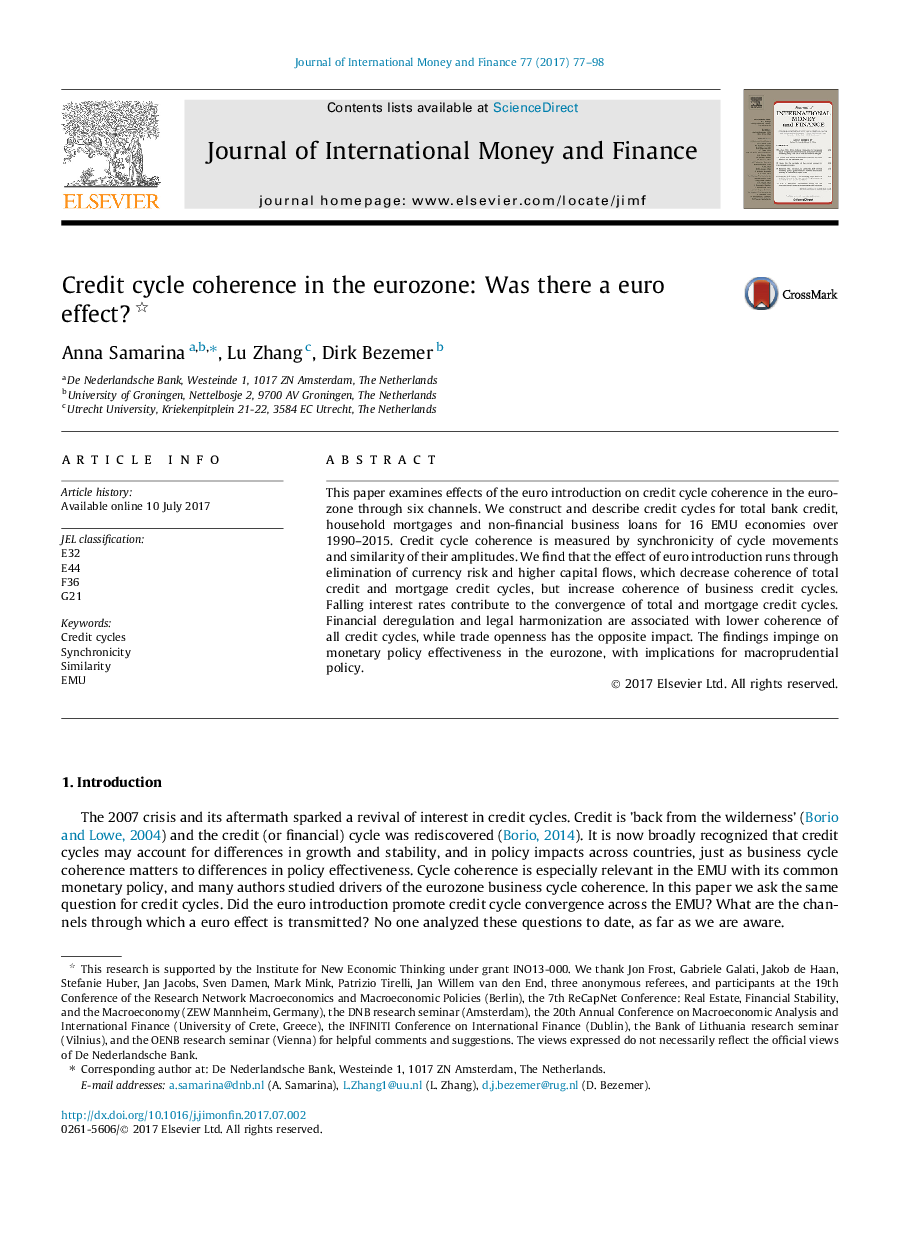| Article ID | Journal | Published Year | Pages | File Type |
|---|---|---|---|---|
| 5101091 | Journal of International Money and Finance | 2017 | 22 Pages |
Abstract
This paper examines effects of the euro introduction on credit cycle coherence in the eurozone through six channels. We construct and describe credit cycles for total bank credit, household mortgages and non-financial business loans for 16 EMU economies over 1990-2015. Credit cycle coherence is measured by synchronicity of cycle movements and similarity of their amplitudes. We find that the effect of euro introduction runs through elimination of currency risk and higher capital flows, which decrease coherence of total credit and mortgage credit cycles, but increase coherence of business credit cycles. Falling interest rates contribute to the convergence of total and mortgage credit cycles. Financial deregulation and legal harmonization are associated with lower coherence of all credit cycles, while trade openness has the opposite impact. The findings impinge on monetary policy effectiveness in the eurozone, with implications for macroprudential policy.
Related Topics
Social Sciences and Humanities
Economics, Econometrics and Finance
Economics and Econometrics
Authors
Anna Samarina, Lu Zhang, Dirk Bezemer,
